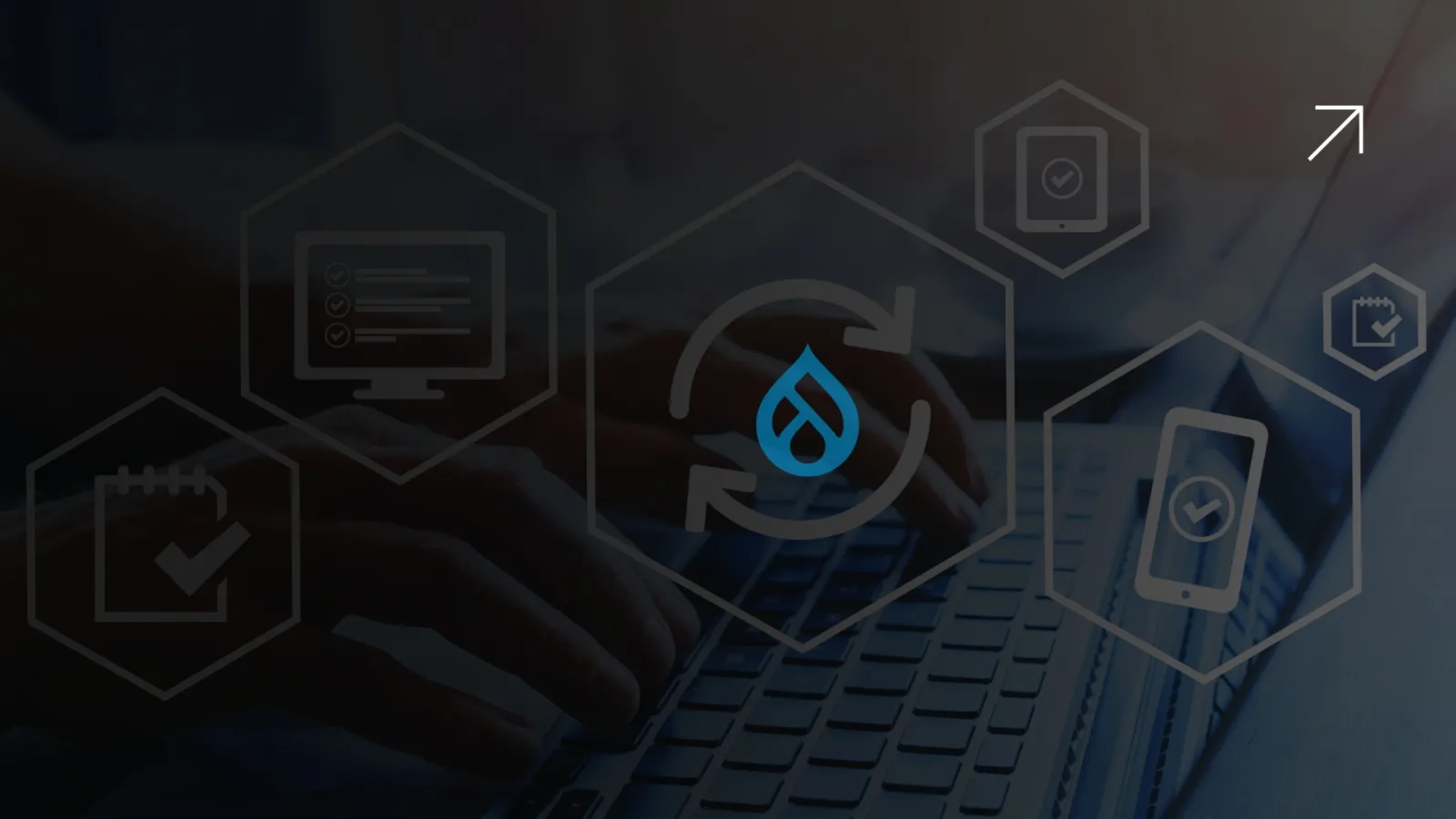Migrating to Drupal 11 is not just a project milestone — it’s a strategic turning point. For many organizations, especially midsize enterprises navigating the post-Drupal 7 landscape, the initial excitement of launching a shiny new site is quickly followed by a deeper, more critical question: How do we keep this running — securely, efficiently, and affordably — in the long run?
The answer lies in building a strong foundation for Drupal 11 support and maintenance services. This phase isn’t just about bug fixes or occasional module updates; it’s about creating a sustainable ecosystem around your website, ensuring performance, security, and user satisfaction over time. Just as a well-built house needs regular upkeep, your Drupal 11 site demands strategic, ongoing care. That care, however, requires the right talent, realistic cost planning, and — in many cases — a trusted agency partner.
Designing a Drupal 11 Support and Maintenance Strategy
Creating a sustainable support and maintenance strategy for your Drupal 11 site begins with recognizing that maintenance is not a reactive checklist, but a continuous cycle. The strategy should be designed to cover proactive updates, emergency response, optimization, and forward-looking planning — all tied together by defined roles, timelines, and performance goals.
The first layer of strategy is routine maintenance. This involves scheduling regular updates for Drupal core and contributed modules, typically on a monthly or bi-monthly basis, depending on the risk profile of the site. Updates should be tested first in a development or staging environment before being deployed to production. This reduces the likelihood of breaking live functionality due to module incompatibilities or regressions.
Next is monitoring and incident response. Your strategy should include 24/7 uptime monitoring, error logging, and performance tracking through tools like New Relic, Sentry, or even built-in Drupal reports. Establish response protocols — who gets alerted when something breaks, what the escalation process is, and how fast issues must be resolved. For high-traffic or mission-critical sites, a support-level agreement (SLA) should define these timelines clearly.
The third piece involves content governance and editorial support. This means maintaining clear workflows for who can publish, who reviews, and how versioning is managed. The editorial experience in Drupal 11 can be significantly improved using tools like Workspaces or Layout Builder, but only if the governance around them is planned. Your support strategy should include regular audits of roles and permissions to ensure content security and editorial efficiency.
Another critical layer is performance and accessibility optimization. Periodic performance audits should be scheduled — quarterly or biannually — to test page speed, caching efficiency, and mobile responsiveness. Similarly, accessibility standards should be reassessed regularly to ensure compliance with evolving guidelines, particularly for organizations bound by ADA or WCAG regulations.
Lastly, a mature Drupal support and maintenance services strategy includes roadmap planning and technical debt management. This means working with your development partner or internal team to evaluate which deprecated modules need replacement, which parts of the system can be improved with automation, and what innovations — like decoupled architecture or API integration — can be phased in over time. This roadmap doesn’t need to be rigid, but it should exist as a living document reviewed every quarter.
When these elements are woven together — scheduled updates, active monitoring, editorial support, performance reviews, and forward planning — you get more than a site that works. You get a Drupal 11 site that evolves, scales, and continues to deliver business value long after its initial launch.
The Developer Dilemma: Talent Scarcity and Its Implications
When companies consider long-term support for Drupal 11, the first challenge often centers around talent. Unlike platforms with a larger market share like WordPress, Drupal has always been more specialized — offering deep flexibility and power, but requiring developers with specific expertise. Drupal 11 continues that legacy, with modern object-oriented PHP practices and a growing focus on decoupled architectures. While that ensures cutting-edge performance, it also means not every generalist PHP developer can jump in and handle ongoing support tasks confidently.
Looking at current listings on directories such as "Top Drupal Developers in USA" or "Hire Drupal Developers in USA," it becomes clear that talent is available — but limited. Developers who specialize in Drupal are often in high demand, and that demand drives up the cost of hiring or retaining skilled professionals. For decision-makers, this raises a long-term concern. If the developer pool is small today, will it shrink further as new developers gravitate toward JavaScript frameworks or headless CMS platforms? Conversations happening in forums and communities, such as the widely discussed “Is Drupal still relevant to learn in 2023,” suggest that while PHP remains foundational and reliable, newer developers are more likely to favor newer stacks unless they work within organizations with a strong Drupal culture.
This evolving talent landscape doesn’t mean that organizations should shy away from Drupal 11. On the contrary, it emphasizes the importance of planning. Businesses must be proactive about talent retention, skills development, and succession planning for in-house teams. For many, it also means considering external partners as a core part of their Drupal support and maintenance services strategy.
Balancing Costs with Realistic Expectations
With the recognition that Drupal 11 development expertise comes at a premium, the next issue becomes cost. Ongoing Drupal support and maintenance services don’t have to be prohibitively expensive, but they do require thoughtful budgeting. Maintenance can include everything from security patching and performance monitoring to module updates, accessibility compliance, analytics integration, and SEO enhancements.
The total cost depends largely on how dynamic your site is. A complex, high-traffic platform with frequent content changes and integrated third-party services will naturally require more attention than a brochure-style site. But even the simplest Drupal 11 site needs a regular update schedule, proactive vulnerability scans, and occasional database optimization. Underinvesting in support risks far greater costs later — including lost traffic, poor user experience, or in worst cases, a security breach.
Companies must approach Drupal support and maintenance services with a mindset similar to IT infrastructure planning. It’s not a line item you cut when budgets tighten, but an essential investment in digital continuity. This doesn’t mean you need a full-time in-house team. What’s often more efficient is a hybrid model, combining a lean internal team for day-to-day tasks with a reliable agency partner who can step in for complex updates, audits, or emergency troubleshooting.
Partnering with the Right Agency: A Strategic Decision
For many organizations, the best way to ensure long-term success with Drupal 11 is to build a strong relationship with a Drupal-focused agency. Agencies bring not just access to experienced developers, but also processes, tools, and institutional knowledge that streamline support workflows. They can offer service level agreements (SLAs), 24/7 monitoring, and periodic audits that may not be feasible with a small internal team.
Selecting the right agency, however, requires more than just a Google search. Businesses should look for partners who have deep experience with Drupal 11 specifically — including those familiar with the latest APIs, configuration management workflows, and modern theming practices. A good agency doesn’t just respond to issues; they anticipate them. They work proactively, advising on best practices, performance enhancements, and upcoming changes in the Drupal roadmap that may impact your business.
This partnership model also provides flexibility. Rather than maintaining a full team of senior developers in-house, organizations can scale up or down based on project needs, without compromising the integrity of their platform. The agency becomes an extension of your team, aligning with your internal processes while filling critical skill gaps when needed. In a world where Drupal talent is both valuable and scarce, this approach provides access to expertise without the cost burden of building it entirely from scratch.
Building a Culture of Continuous Care
Technology alone doesn’t guarantee success. What makes a Drupal 11 site thrive over time is a culture of continuous improvement — one where updates are scheduled, changes are documented, and metrics are monitored. This mindset is just as important as any technical skillset. Teams should be trained to identify issues early, flag performance drops, and understand the CMS well enough to support non-technical users.
The cultural aspect also involves creating clear governance. Who owns updates? Who reviews module changes? How often are accessibility and SEO audits performed? These operational questions don’t answer themselves, and without clear ownership, even the best-designed Drupal 11 site can become outdated or vulnerable. It’s not uncommon to see sites neglected after launch, their security updates long overdue and user roles left unmanaged. A strong support plan avoids that fate by establishing regular check-ins, performance reviews, and content governance policies.
The Long Game: Staying Ahead with Drupal 11
Drupal 11 is designed with long-term success in mind. Its improved backward compatibility, smarter configuration management, and focus on clean architecture all make it easier to manage than previous versions. But its power only delivers value when paired with sustained care. Whether through internal developers or external Drupal support and maintenance services, organizations must commit to the long game.
As new modules are released and core improvements continue, Drupal 11’s true advantage lies in its ability to evolve. That means your support strategy must be just as flexible. Keeping your team updated, refining your partnership with an agency, and budgeting realistically are all steps in a journey that goes well beyond the initial migration. The companies that thrive on Drupal 11 won’t just be those that launched well — they’ll be the ones that maintained with purpose.





